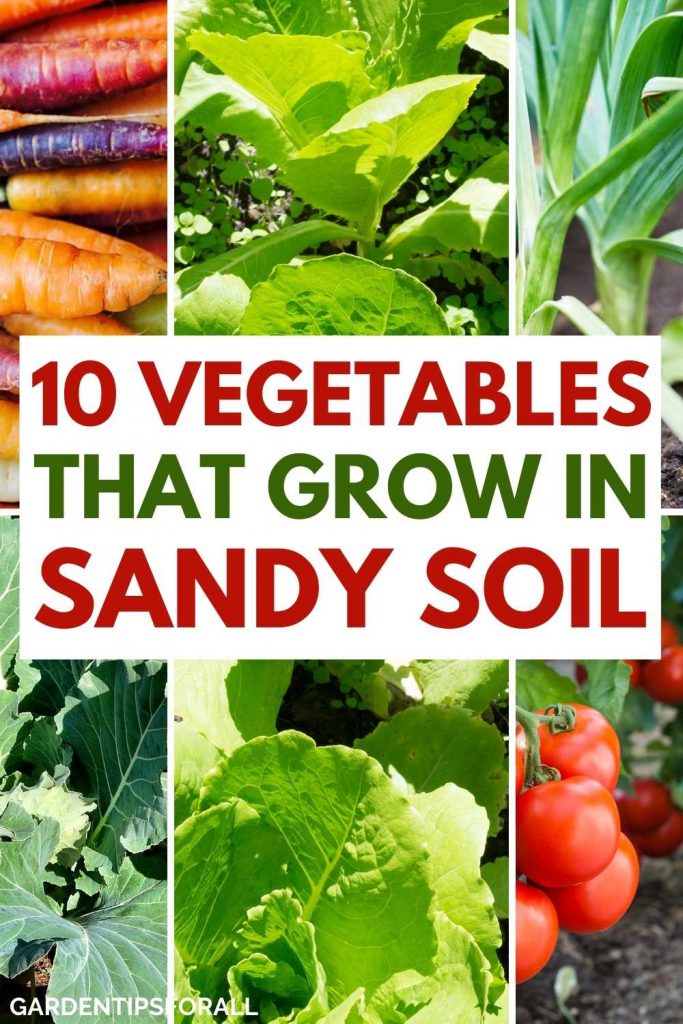Grow the Best Veggies in Sandy Soil: A Comprehensive Guide

Are you tired of watching your garden dreams crumble in the sand? Don't let sandy soil hold you back from growing a thriving vegetable garden. With the right know-how and a bit of TLC, you can transform your sandy plot into a flourishing oasis. Let's dive into the best vegetables to grow in sandy soil and explore the secrets to sandy soil gardening success.
Understanding Sandy Soil
Before we dive into the best crops for sandy soil, let's understand what we're dealing with. Sandy soil is composed of large particles, which allows water to drain quickly. While this might seem like a blessing in disguise, it also means that nutrients are easily washed away, leaving your plants hungry for more. But fear not, with the right techniques, you can turn this challenge into an opportunity.
Best Vegetables to Grow in Sandy Soil
Root Vegetables: The Underground Heroes
Root vegetables are some of the best crops for sandy soil. Their deep-reaching roots can tap into moisture and nutrients that other plants might miss. Carrots, parsnips, and radishes are excellent choices. These veggies thrive in well-drained soil and can tolerate the occasional dry spell.

Leafy Greens: The Nutrient Powerhouses
Leafy greens like spinach, lettuce, and kale are ideal plants for sandy soil. They have shallow root systems that can quickly absorb the available nutrients. Plus, they grow rapidly, which means you can enjoy a harvest in no time.
Legumes: The Nitrogen Fixers
Beans, peas, and lentils are fantastic choices for sandy soil. These plants have the unique ability to fix nitrogen in the soil, enriching it for future crops. They also have deep root systems that help them access moisture and nutrients.
Tips for Growing Vegetables in Sand
Improve Soil Structure
One of the best ways to improve sandy soil is by adding organic matter. Compost, manure, and leaf mold can all help to improve soil structure, retain moisture, and provide essential nutrients. Think of it as giving your soil a nutritious meal that will keep your plants happy and healthy.
Mulch, Mulch, Mulch
Mulching is a game-changer for sandy soil gardening. A layer of organic mulch can help retain moisture, suppress weeds, and regulate soil temperature. It's like giving your garden a cozy blanket that protects it from the elements.
Water Wisely
Sandy soil drains quickly, so it's crucial to water your plants regularly. However, avoid overwatering, as this can wash away nutrients. Aim for deep, infrequent watering to encourage deep root growth.
Ideal Plants for Sandy Soil: A Closer Look
Carrots: The Sweet and Crunchy Delight
Carrots love sandy soil because it allows their roots to grow long and straight. They require well-drained soil and plenty of sunshine. Just make sure to keep the soil consistently moist to prevent cracking.
Spinach: The Iron-Rich Superfood
Spinach is a fast-growing leafy green that thrives in sandy soil. It prefers cooler temperatures and partial shade. Keep the soil consistently moist, and you'll be rewarded with a bountiful harvest of nutrient-rich greens.
Beans: The Versatile Protein Source
Beans are not only delicious but also incredibly beneficial for sandy soil. They fix nitrogen in the soil, improving its fertility. Plant them in full sun and provide consistent moisture for the best results.

Conclusion: Embrace the Sand
Don't let sandy soil hold you back from growing a thriving vegetable garden. With the right techniques and a bit of TLC, you can transform your sandy plot into a flourishing oasis. Remember, the best vegetables to grow in sandy soil include root vegetables, leafy greens, and legumes. Improve your soil structure with organic matter, mulch regularly, and water wisely. Embrace the sand, and watch your garden thrive.
FAQs
1. What are the best vegetables to grow in sandy soil?
The best vegetables to grow in sandy soil include root vegetables like carrots, parsnips, and radishes; leafy greens like spinach, lettuce, and kale; and legumes like beans, peas, and lentils.
2. How can I improve sandy soil for gardening?
You can improve sandy soil by adding organic matter like compost, manure, and leaf mold. This helps to improve soil structure, retain moisture, and provide essential nutrients.
3. How often should I water vegetables in sandy soil?
Sandy soil drains quickly, so it's crucial to water your plants regularly. Aim for deep, infrequent watering to encourage deep root growth. Avoid overwatering, as this can wash away nutrients.
4. What are the benefits of growing legumes in sandy soil?
Legumes like beans, peas, and lentils have the unique ability to fix nitrogen in the soil, enriching it for future crops. They also have deep root systems that help them access moisture and nutrients.
5. Why is mulching important for sandy soil gardening?
Mulching is important for sandy soil gardening because it helps retain moisture, suppress weeds, and regulate soil temperature. A layer of organic mulch can protect your garden from the elements and promote healthy plant growth.
0 Response to "Grow the Best Veggies in Sandy Soil: A Comprehensive Guide"
Post a Comment